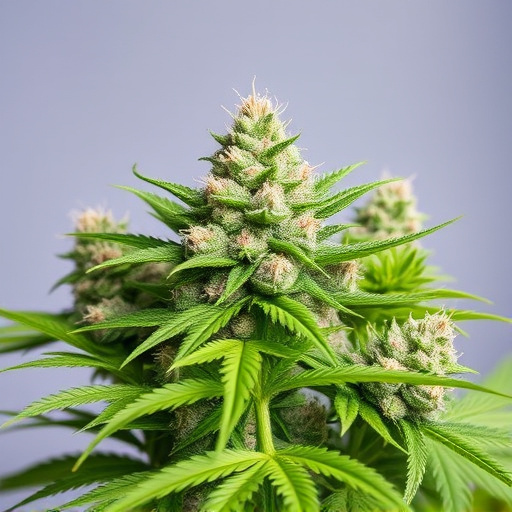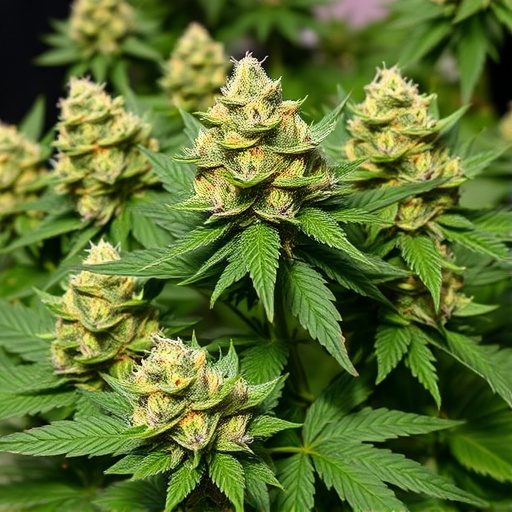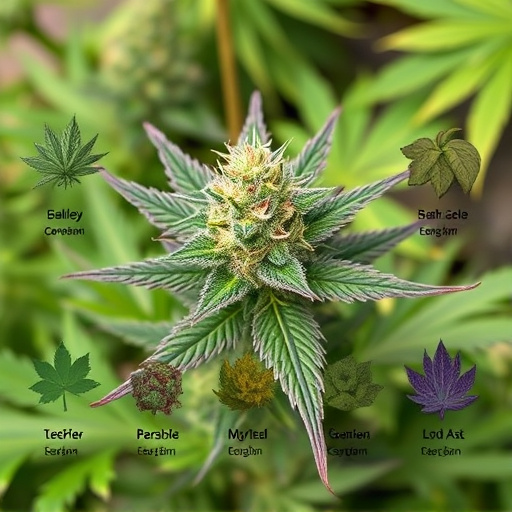Terpenes, aromatic oils in cannabis, are key to identifying cannabis strains. These compounds create unique smells, flavors, and interact with our bodies' cannabinoid receptors, influencing effects. Understanding terpene characteristics allows consumers to choose strains tailored to their desired therapeutic outcomes, from calming to energizing, based on profiles like myrcene, limonene, pinene, and linalool. Advanced testing methods reveal synergistic interactions between terpenes and cannabinoids, empowering users to make informed decisions in the market. Terpene analysis enables experts and enthusiasts to predict cannabis experiences and select strains for specific effects.
“Unraveling the enigmatic world of terpenes in cannabis offers a deeper understanding of its diverse effects. These aromatic compounds, responsible for the unique scents and flavors, play a pivotal role in shaping the plant’s therapeutic attributes. This article guides you through the intricate dance between terpenes and cannabis experiences, exploring their influence on everything from relaxation to potential medical benefits. Additionally, we’ll delve into the exciting practice of identifying specific cannabis strains based on their distinct terpene profiles.”
- Understanding Terpenes: The Aromatic Compounds of Cannabis
- Exploring the Impact of Terpenes on Cannabis Effects
- Identifying Cannabis Strains Based on Their Terpene Profile
Understanding Terpenes: The Aromatic Compounds of Cannabis

Terpenes, often referred to as the aromatic compounds of cannabis, are a diverse group of volatile oils responsible for the characteristic smells and flavors associated with different strains. These compounds play a crucial role in identifying cannabis strains, offering more than just sensory experiences. Beyond their contribution to the scent and taste profiles, terpenes have been found to interact with the cannabinoid receptors in our bodies, potentially influencing the perceived effects of cannabis.
Each terpene has unique properties, contributing to the overall experience and therapeutic potential of cannabis. For instance, myrcene is known for its earthy and musky notes and is often linked to feelings of relaxation and pain relief. Similarly, limonene offers a refreshing citrus aroma and is associated with uplifting moods and stimulating mental clarity. Understanding these compounds can help consumers make informed choices when identifying cannabis strains that align with their desired effects.
Exploring the Impact of Terpenes on Cannabis Effects
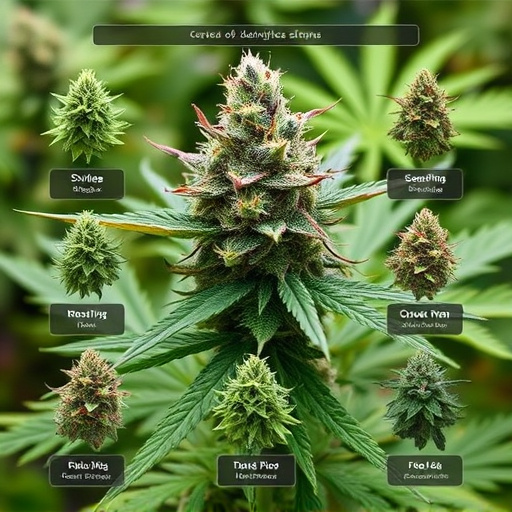
Exploring the Impact of Terpenes on Cannabis Effects
Identifying cannabis strains is a complex process that goes beyond THC levels alone. Terpenes, organic compounds responsible for the unique aroma and flavor profiles of different strains, play a significant role in shaping the overall effects of cannabis. Each terpene offers distinct therapeutic benefits, ranging from calming and relaxing to invigorating and energizing. By understanding the specific terpenes present in various cannabis strains, consumers can better navigate the market and select varieties that align with their desired outcomes.
This exploration involves delving into the chemical composition of different strains, often requiring advanced testing methods to identify key terpenes like myrcene, limonene, pinene, and linalool. As research continues to uncover the intricate relationships between terpenes and cannabinoids, it becomes increasingly clear that these compounds work synergistically to produce the multifaceted effects experienced by users. This knowledge empowers both medical patients and recreational consumers to make informed decisions when identifying cannabis strains tailored to their individual preferences and needs.
Identifying Cannabis Strains Based on Their Terpene Profile
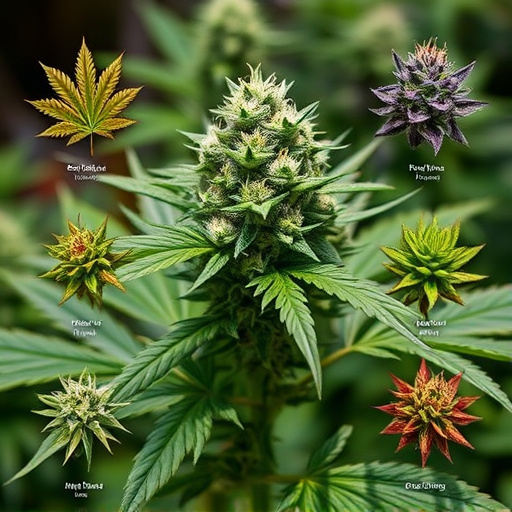
Identifying cannabis strains based on their terpene profile is a fascinating aspect of understanding the plant’s diverse effects. Terpenes, aromatic compounds produced by cannabis and many other plants, play a significant role in shaping the unique characteristics of each strain. By analyzing these chemical signatures, enthusiasts and experts can predict the potential experiences associated with different varieties.
Each cannabis strain boasts its own terpene makeup, contributing to distinct aromas, flavors, and effects. For instance, myrcene is known for its earthy, musky scent and is often linked to relaxing and sedative properties, while limonene offers a citrusy profile and may induce feelings of energy and focus. Identifying these profiles allows consumers to make informed choices, ensuring they select strains aligned with their desired outcomes, whether it’s relaxation, euphoria, or mental clarity.
Terpenes, the aromatic compounds found in cannabis, play a significant role in shaping the plant’s unique effects. By understanding and recognizing the impact of different terpenes, enthusiasts can better navigate the vast world of cannabis strains. Knowing the specific terpene profiles allows for more informed decisions when identifying cannabis strains, ensuring individuals select varieties that align with their desired experiences. This knowledge empowers users to explore the diverse range of cannabis benefits and enjoy a tailored experience.


